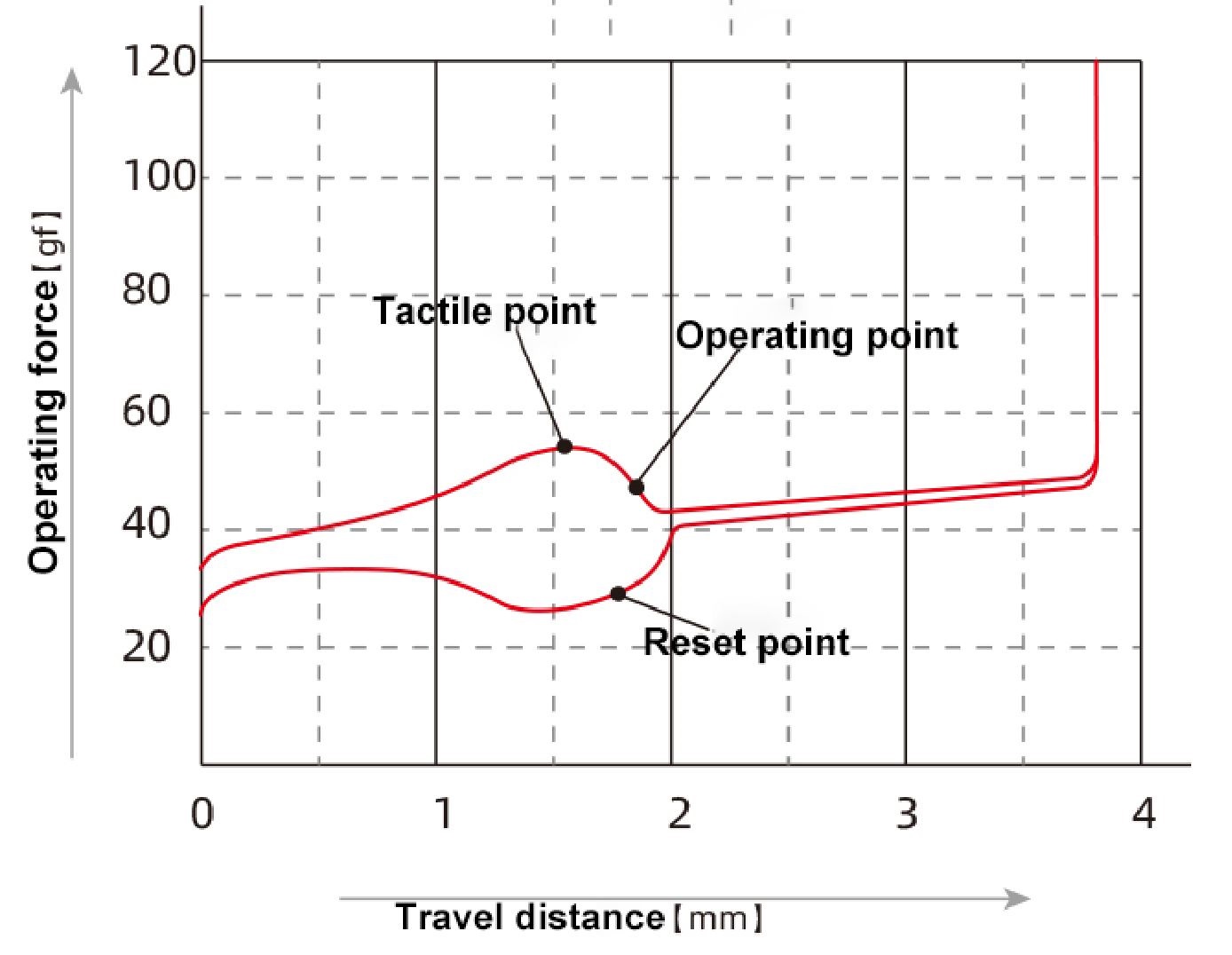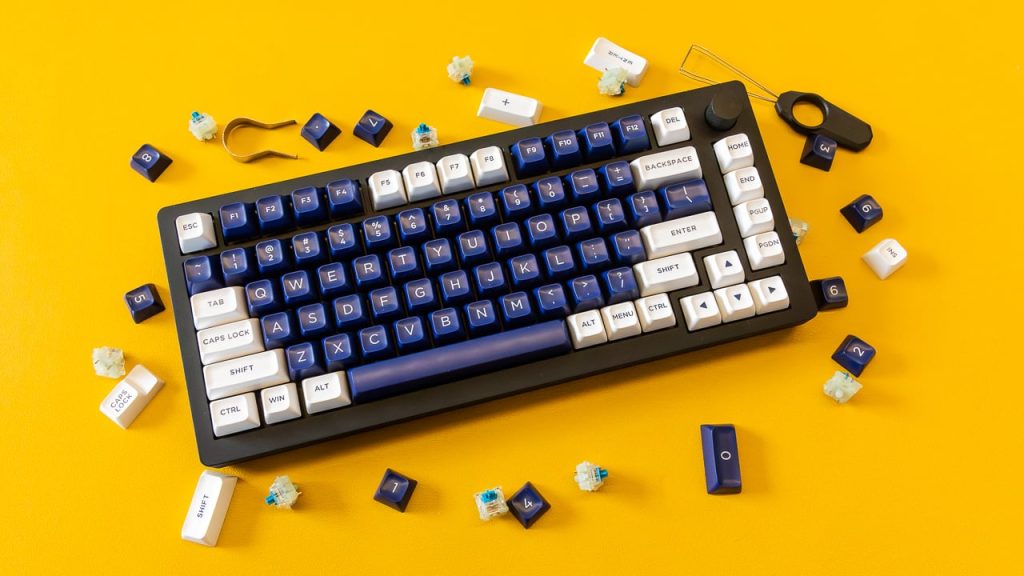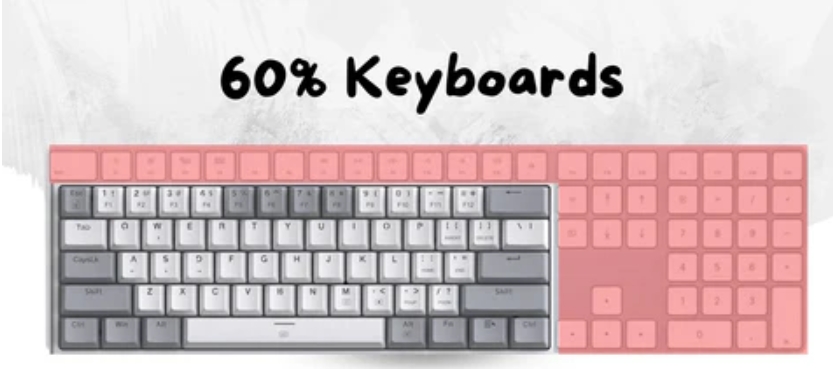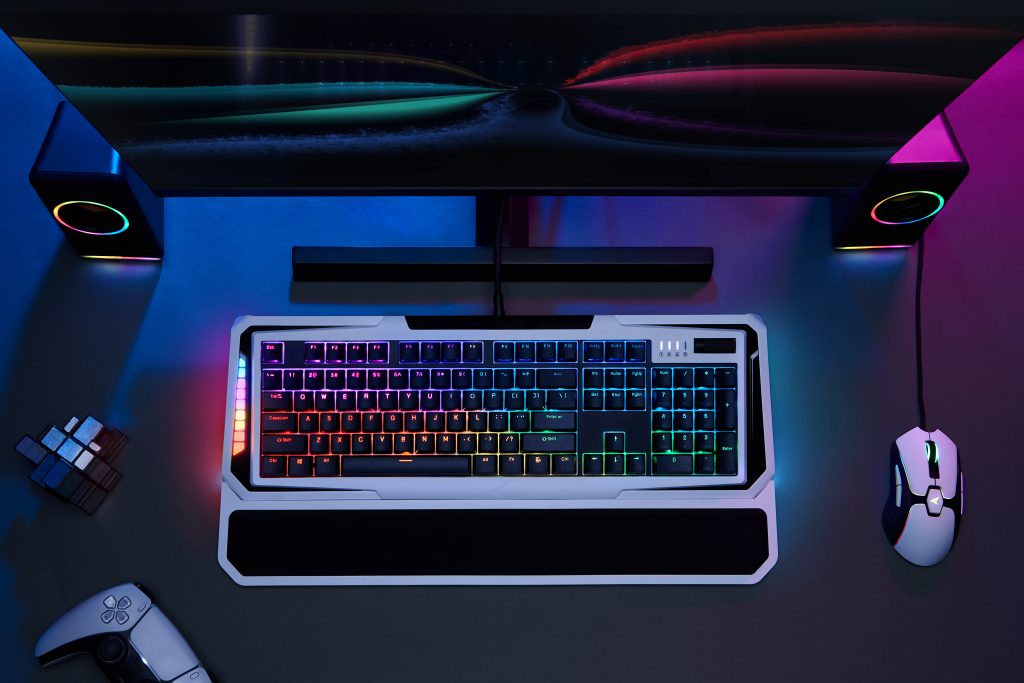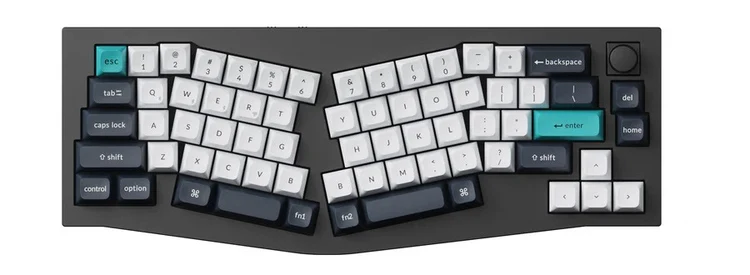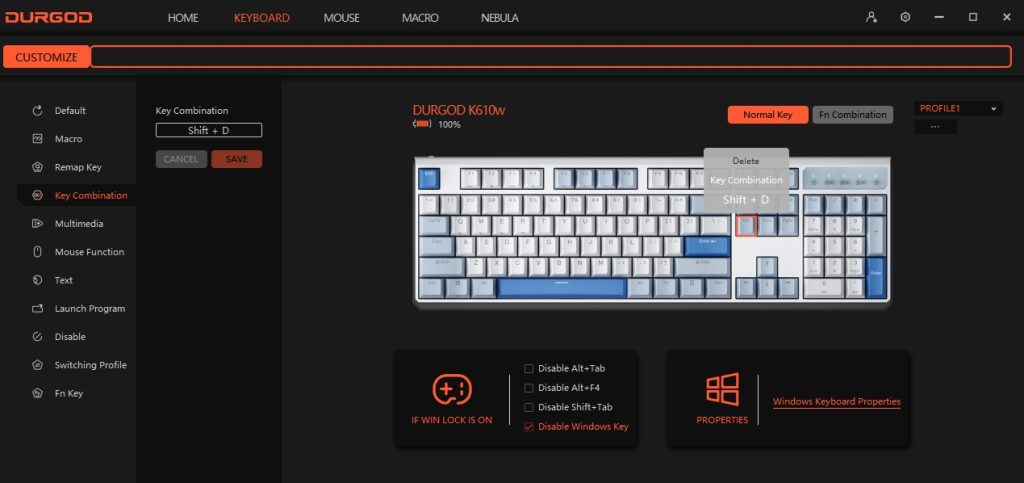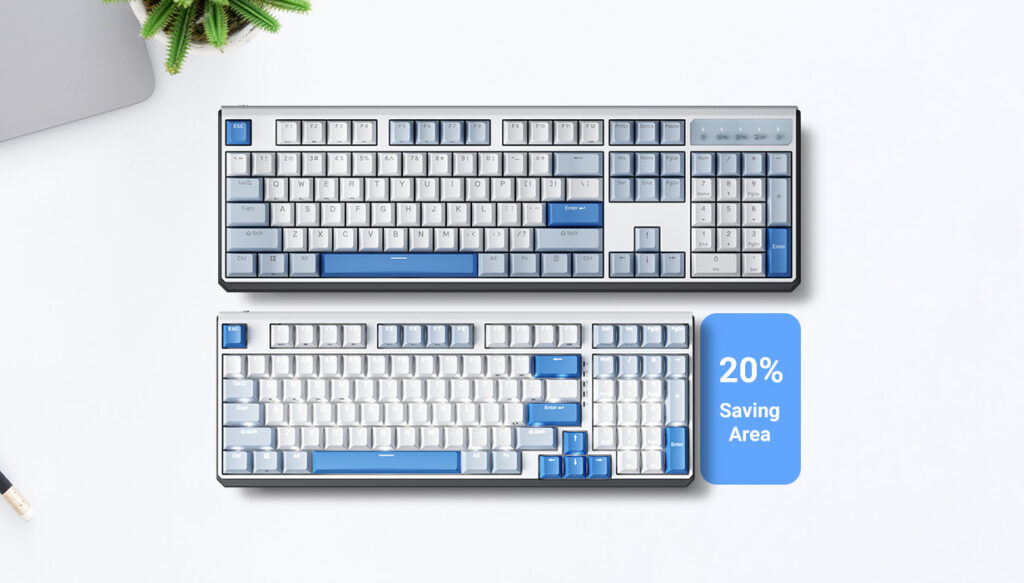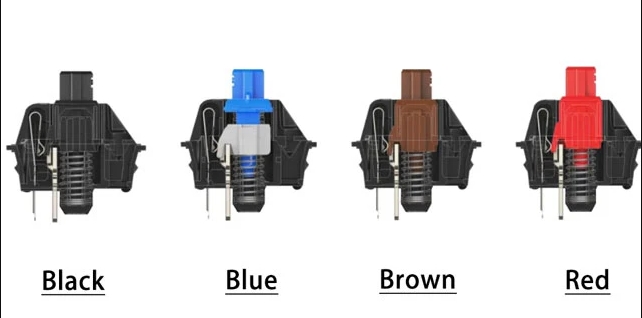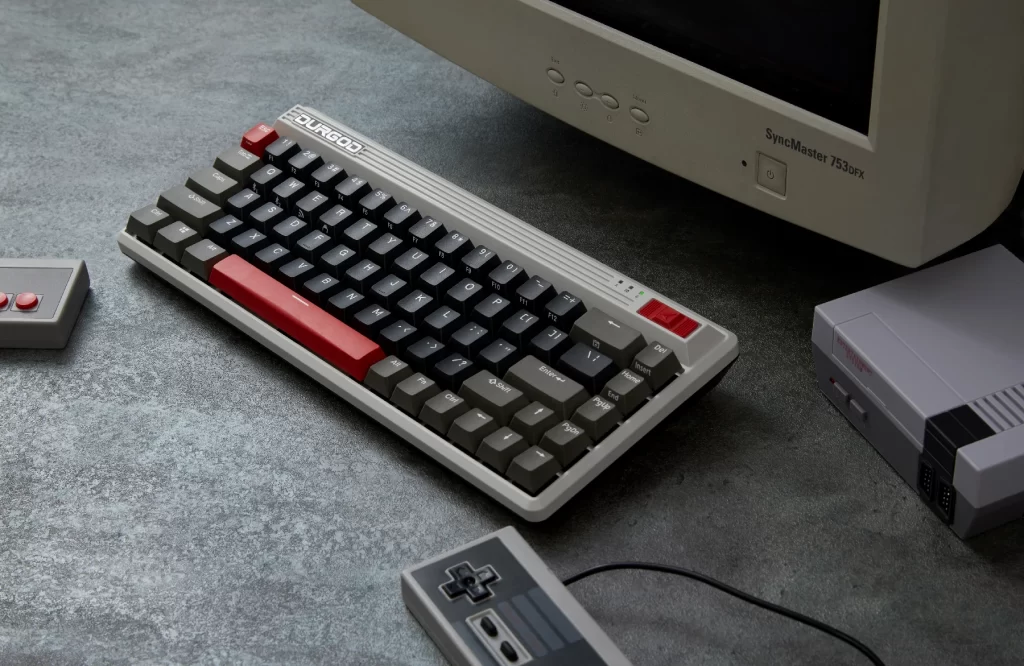Travel distance in mechanical switches is a pivotal element that profoundly impacts the typing experience on a mechanical keyboard, referring to the total journey a key undertakes from its initial press to its deepest depression.
Understanding Travel Distance
- Components of Travel Distance:
- Actuation Point: Marks the juncture at which a keypress is recognized.
- Bottom Out: The terminal point of a key’s descent.
- Total Travel: The comprehensive distance from the initial press to the bottom out.
- Measurement:
- Travel distances, typically quantified in millimeters, exhibit variation across different switch models.
Types of Switches and Their Travel Distances
- Cherry MX Switches:
- Renowned for setting industry benchmarks, Cherry MX switches characteristically offer a total travel distance of around 4mm, with actuation generally occurring halfway at about 2mm.
- Other Switch Brands:
- Competing brands such as Topre, Romer-G, and Kailh present distinctive travel distances, each crafting a unique typing narrative.
Impact of Travel Distance on Typing
- Typing Speed and Efficiency:
- Reduced travel distances can augment typing velocity, necessitating lesser movement for actuation, yet might elevate the risk of inadvertent keystrokes.
- Typing Comfort:
- Extended travel distances typically yield pronounced tactile feedback, favored by many for enhanced comfort and precision during prolonged typing engagements.
Travel Distance and Keyboard Customization
- Personal Preference:
- Travel distance preferences diverge widely; gamers may lean towards shorter distances for nimbleness, whereas writers or programmers might opt for longer distances for a more rhythmic typing cadence.
- Custom Mechanical Keyboards:
- Keyboard aficionados often select switches with specific travel distances to tailor their custom builds toward a preferred typing experience.
Considerations and Trade-offs
- Actuation vs. Bottoming Out:
- Distinguishing between the travel required for actuation and that for complete depression is vital. A setup favoring shorter actuation with extended total travel might offer an ideal mix of responsiveness and cushioning.
- Ergonomics:
- Optimal travel distance selection can elevate ergonomic benefits, potentially minimizing repetitive strain injuries.
Conclusion
Travel distance in mechanical switches decisively shapes a keyboard’s performance, influencing aspects from typing speed and precision to comfort and ergonomics. Its variation among switch types necessitates careful consideration when choosing a mechanical keyboard. Catering to a spectrum of needs and preferences, the right travel distance can significantly refine the keyboard usage experience, whether geared toward gaming, typing, or everyday tasks.
For more knowledge of mechanical keyboards, visit DURGOD.



